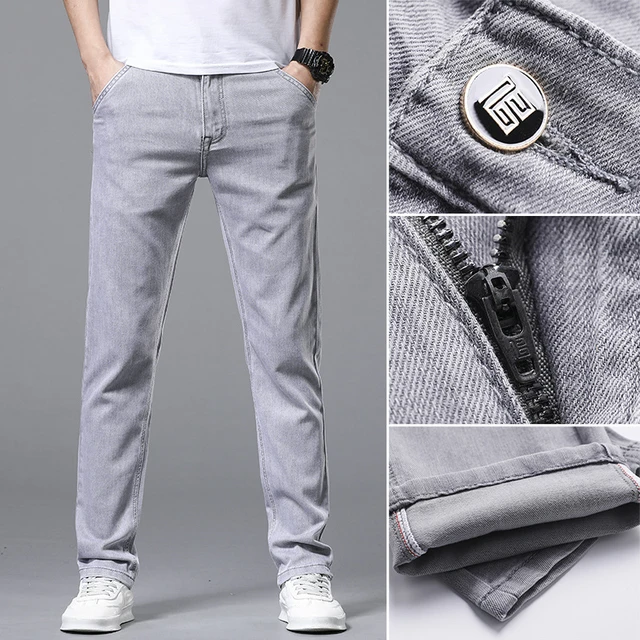
Hemming jeans is a fundamental alteration that ensures the perfect fit and prevents unsightly fraying.
Here’s a detailed guide to hemming men’s jeans:
Measure and Mark:
Start by putting on the jeans with your preferred shoes as this will determine the final length. Fold the cuff up to the desired length, ensuring the fold is even all around. Use chalk or fabric pins to mark where you want the new hemline to be. Measure twice for accuracy.
Remove Excess Fabric:
Using sharp fabric scissors, cut off the excess denim along the marked line. Be cautious not to cut into the original hem if you’re aiming for an invisible hem finish, which involves folding up the existing hem rather than cutting it off.
Fold and Pin:
If keeping the original hem, fold it up inside the leg so that the raw edge is enclosed. Pin the hem in place, making sure it’s evenly distributed around the leg. For a clean finish, use tailor’s chalk to mark the stitching line if necessary.
Sew the Hem:
Thread your sewing machine with thread that matches the denim color. Sew along the old hemline or the marked stitching line, removing pins as you go. Use a straight stitch or a double needle for added strength. If hand-sewing, a simple running stitch or blind hem stitch works well.
Finishing Touches:
After sewing, press the hem flat with an iron to create a crisp, professional look. Trim any loose threads and check that the hem is even all around before wearing.
Repairing Men’s Jeans: From Rips to Tears
Jeans are prone to wear and tear, but they can often be salvaged with some basic repair techniques:
Patch Repair:
Clean and Prepare:
Clean the damaged area and let it dry completely. Cut a denim patch slightly larger than the hole or tear.
Position the Patch:
Place the patch behind the jean’s front layer (inside out), aligning it over the damage.
Secure the Patch:
You can either sew the patch using a heavy-duty thread and a whipstitch or zigzag stitch, or use fabric glue specifically designed for denim repairs. Ensure the patch is securely attached to cover the entire damaged area.
Optional Embellishment:
For visible patches, consider adding decorative stitches or leaving frayed edges for a trendy touch.
Darning Method:
Thread and Needle:
Use a darning needle and strong thread that matches the denim color.
Weave the Threads:
Begin weaving the thread over and under the denim fibers around the hole, creating a tight weave that mimics the denim’s original weave pattern. Continue until the entire damaged area is covered.
Personalizing Men’s Jeans: Customization Techniques
Customizing jeans allows for self-expression and individuality. Here are a few popular methods:
Embroidery:
Design and Sketch:
Choose a design and sketch it onto the jeans. You can also use embroidery transfer paper for complex designs.
Embroider:
Thread your embroidery needle with the chosen colors and begin stitching according to your design. This could be anything from initials to intricate patterns.
Painting or Dyeing:
Preparation:
Protect non-target areas with painter’s tape or plastic wrap. If dyeing, ensure the jeans are pre-washed and free from any treatments that may prevent dye absorption.
Apply Color:
Use fabric paint, acrylics mixed with textile medium, or fabric dye following package instructions. Create unique designs, ombre effects, or simply change the overall hue.
Distressing and Fraying:
Create Holes:
Use sandpaper, pumice stone, or a cheese grater to rub away at the denim where you want holes. You can also use scissors to snip small cuts.
Fray Edges:
Pull out some vertical threads to create a natural fray. You can also use a razor blade to gently scrape horizontal lines for a distressed look.
Adding Patches or Pins:
Iron-on or sew-on patches, enamel pins, or buttons are quick ways to add personal flair. Placement can be anywhere from back pockets to the legs, reflecting your interests or style.
Remember, when altering, repairing, or customizing jeans, always take care to maintain the structural integrity and aesthetic appeal of the garment. It’s a process that requires patience and precision, but the end result—a pair of jeans tailored to your exact specifications—is well worth the effort.
